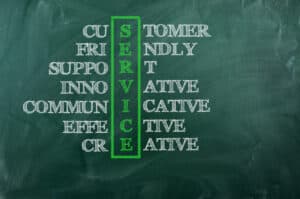
Connected products allow OEMs to move from equipment makers with one customer touch point at the initial sale to a more dynamic role over the long term as an interactive partner with their customers via an EaaS model of operations.
Equipment-as-a-Service (EaaS) is increasingly gaining popularity among OEMs of connected products. It allows OEMs to change their business model from a one-time equipment sale to a recurring revenue model.
The model is well-known in many other fields (e.g., cloud as a service or car leasing). Now it is being applied to equipment. Simply put, EaaS is a financial model with the added benefit of improving a customer’s operations. It is defined as a process in which products are not sold but are provided by an OEM or third party for a period in exchange for a fee to use the equipment.
In this model, the EaaS supplier is responsible for any maintenance, service, repairs, or replacements needed throughout the asset’s life. Customers can also benefit from moving from procurement models with hefty capital expenditures (CAPEX) to more flexible and less costly operational expenditures (OPEX).
See also: Features-as-a-Service: Paywalls are Not Just for Content
Enabling new engagement models
EaaS is by no means a new model. However, modern technology that enables connected products is a game changer. A connected product provides an OEM with a constant stream of information about the product’s status and operational state.
One use of that data is to charge based on usage. So, rather than a simple leasing agreement, an OEM can support more creative plans. For instance, in the past, a high-end medical device might have been offered for a monthly fee. Now, the same device could be offered on a per scan basis. That might get the equipment into places that could not afford the higher monthly fee. Additionally, the OEM can devise new billing options such as discounts for higher monthly utilization.
But that is just the tip of the iceberg. OEMs can leverage the data they collect from connected equipment offered as EaaS to devise additional business models and gain new benefits. Some examples of what can be done include:
Features-as-a-Service: Connected equipment offers new opportunities to deliver enhanced features in innovative ways. Rather than being offered for a one-time fee when the equipment is installed or is initially used, an OEM can generate monthly revenue by offering Features-as-a-Service.
Any feature that is enabled in software can be offered in this manner. For example, an MRI or CT Scan OEM might offer higher resolution or higher speed imaging as a service. Similarly, an industrial printer OEM could do the same.
When features of an EaaS product are offered as a service, they can be added after the initial sale or installation. That gives an OEM the flexibility to provide one product with multiple features that can be selectively turned on for a specific customer. For example, a luxury car OEM could build one model yet offer different trim levels via selectively enabling different features or combinations of features. That might include a sports version that enables more dynamic software-defined braking and steering. Or an OEM might offer a comfort trim that has a heated steering wheel and heated front and back seats.
Whatever the combination of features, an OEM of a connected product can analyze its use in the field and try to upsell existing customers by marketing different features over time.
Predictive maintenance: EaaS shifts the burden on maintaining equipment to OEMs. They are responsible for maintaining the equipment throughout its life span. As such, many OEMs are looking to leverage the connectivity of modern equipment to institute predictive maintenance practices.
One of the greatest benefits of connected products is the wealth of data available about their operation and health. Companies can use that data about the product (and combine other data such as its location, operating environment, etc.) and gain great insights into its performance while operating. Analysis of this data can help identify problems in the making or spot analogies that require additional attention.
Such capabilities can help maintenance staff identify parts or equipment that are likely to fail before their scheduled replacement and maintenance time. When such an expert system detects a problem, it can alert the maintenance staff or even trigger corrective action on its own based on information derived from collective years of knowledge about a piece of equipment.
Equipment design improvements: When connected products are offered in an EaaS model, OEMs have access to vast amounts of operational data about the units in the field. That data can be fed back to the R&D department to see if there are things that can be changed in future iterations of the product.
The data might find overheating under certain conditions. The product group might use that data to perhaps add a fan or a vent to the design. Or the data might reveal that many customers have trouble operating the equipment. That information might be used to simplify operations, make things more intuitive, or provide visual clues on a console.
See also: How Connected Products Enable Predictive Maintenance
Why EaaS now?
Market changes are making EaaS a strategic imperative. In many industrial and consumer segments, margins are shrinking due to international competition and the rising cost of materials and labor. After-sales offerings such as spare parts or technician support have become profit drivers. Now, EaaS offers a way to enable a reliable source of steady high-profit income streams.
Customers are becoming increasingly demanding (some would say they have always been that way). EaaS allows OEMs of connected products to be more flexible. EaaS complements OEM efforts to offer features on demand or as a service.
Additionally, many customers have shifted to as-a-Service models for their software, video viewing, and other things. EaaS does that and supports the transition away from CapEx models to OpEx models that many businesses like these days.
The bottom line is that connected products allow OEMs to move from equipment makers with one customer touch point at the initial sale to a more dynamic role over the long term as an interactive partner with their customers via an EaaS model of operations.






